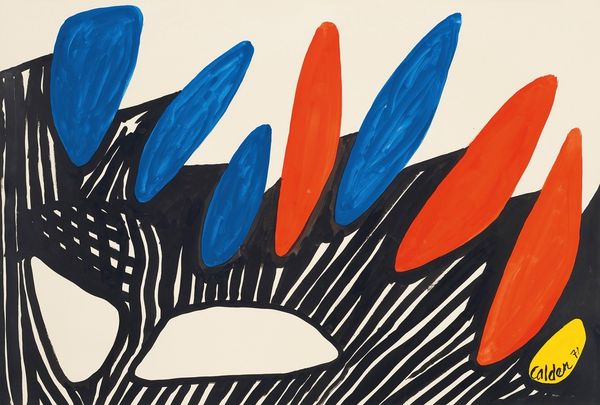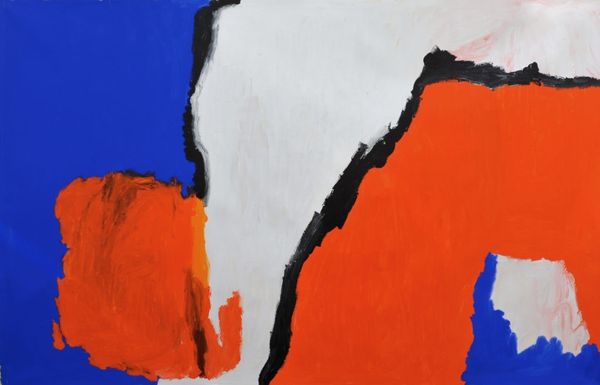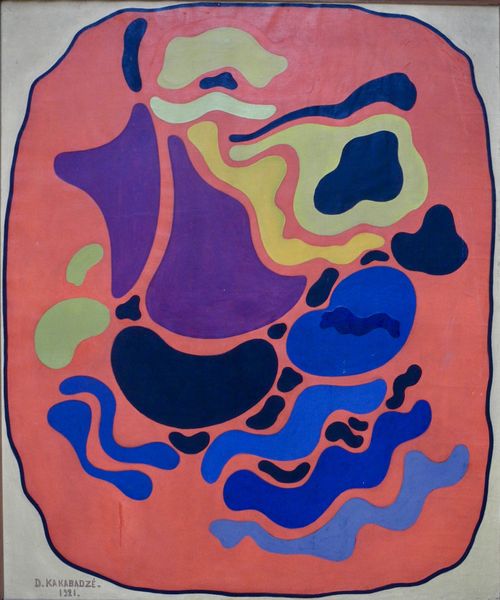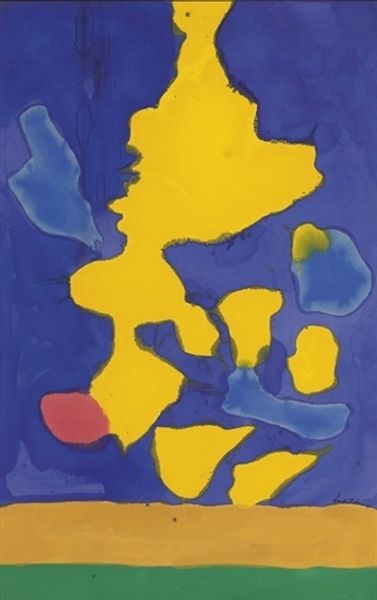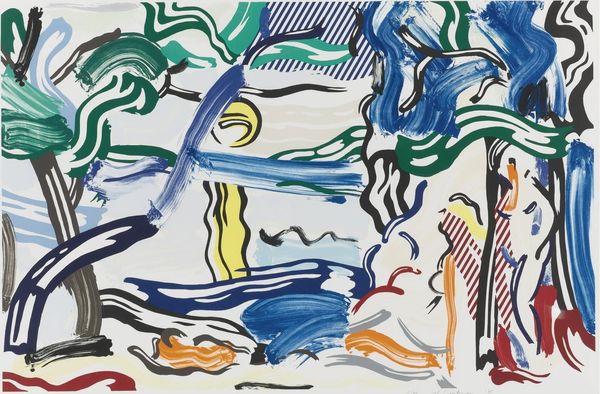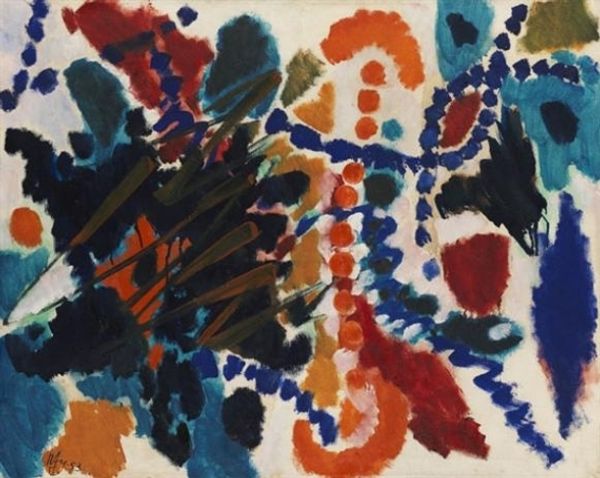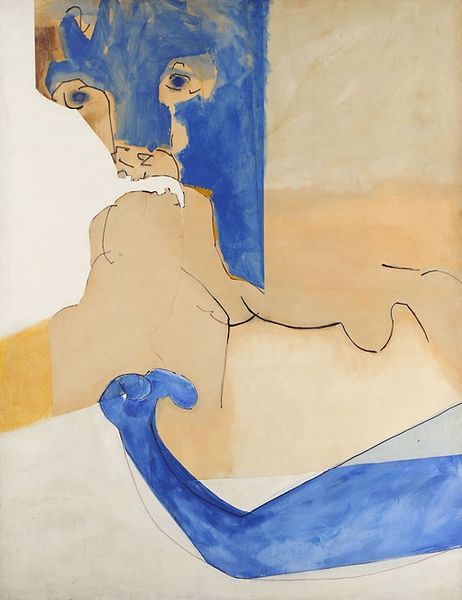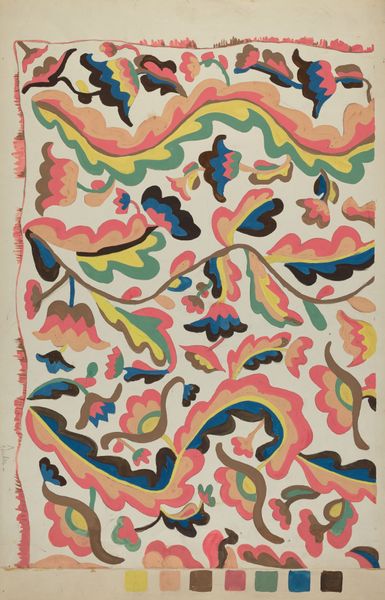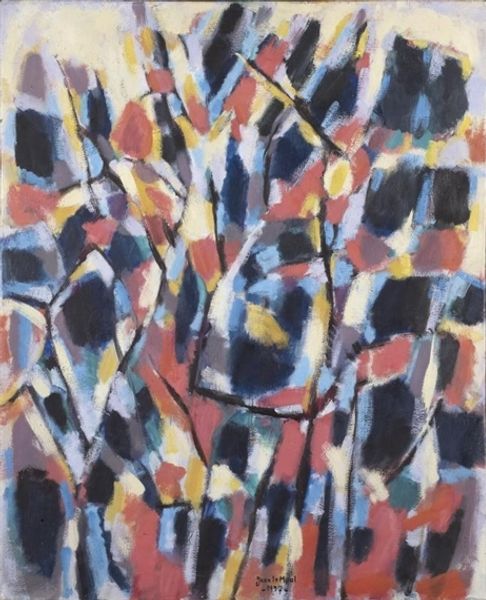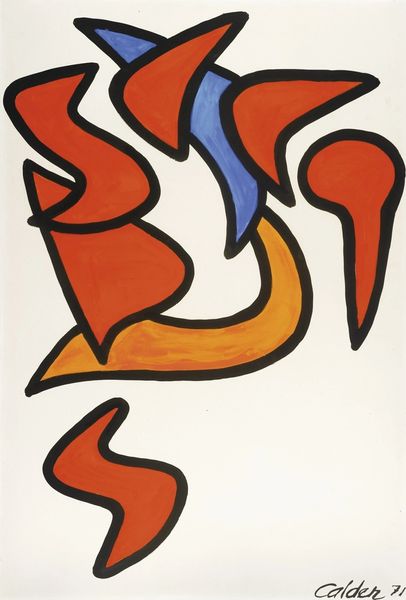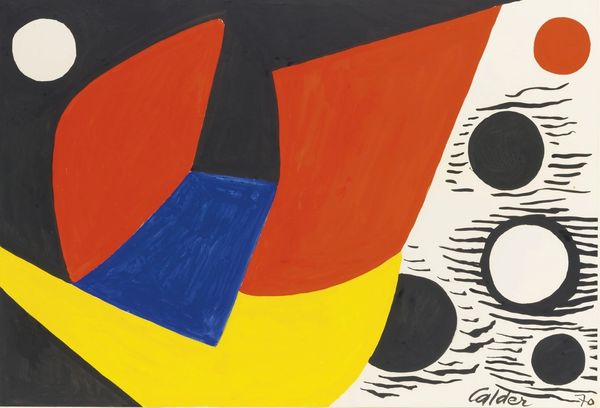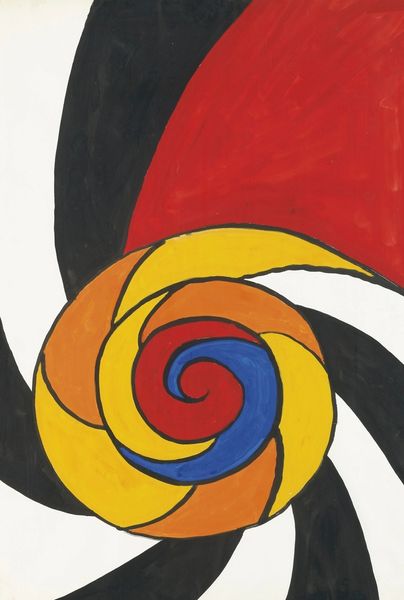
mixed-media, painting
#
mixed-media
#
painting
#
caricature
#
abstract
#
form
#
geometric
#
line
#
modernism
Copyright: Modern Artists: Artvee
Curator: Looking at this Alexander Calder painting, titled "Rio", one is immediately struck by its apparent simplicity. Editor: Yes, it’s incredibly evocative. The boldness of the colors alongside the almost playful lines gives it an immediate sense of kinetic energy, wouldn't you say? There's an exuberance here. Curator: Precisely. The application of mixed media highlights a transition into more economic uses of available resources. Calder, of course, is celebrated for challenging the traditional static form with his mobiles, and this feels like an early exploration of capturing movement and form. I see the beginnings of his later construction methods. Editor: It feels so connected to a specific historical period. Modernism's drive toward abstraction is vividly clear, as are its wider goals of capturing contemporary themes. Imagine experiencing this kind of visual language for the first time! It’s not merely decorative; it communicates something about progress and innovation at the turn of the century. Also, note how something seemingly rudimentary carries weight with audiences and cultural commentators of its time. It feels charged with import, which also affects its value, reception, and, of course, the price tag that some pay for it. Curator: And one sees evidence of line playing a critical role. Calder's usage pushes a shift away from classical conventions of representation toward pure abstraction, mirroring other radical developments in early 20th-century design and craft. I see a rejection of industrial monotony and the possibilities within new materials for more artistic self-expression. Editor: Viewing "Rio", one could argue, is almost like entering a dialogue about how societal values are represented through visual imagery. This painting provides insight into socio-cultural narratives linked to modern identity development, the effects of cultural institutions, and evolving political ideals that occurred in that era. Curator: For me, this painting stands as a fascinating demonstration of Calder’s investigation of color, line, and form during his period of artistic development and experimentation with found supplies and their re-use. Editor: I agree. Thinking about it, viewing art isn't just aesthetics, but also an active reading of history that enables ongoing dialogues that reflect who we are today and the directions where cultures will likely go.
Comments
No comments
Be the first to comment and join the conversation on the ultimate creative platform.
